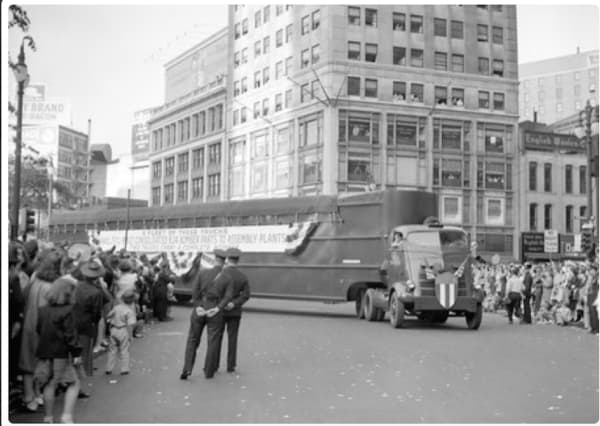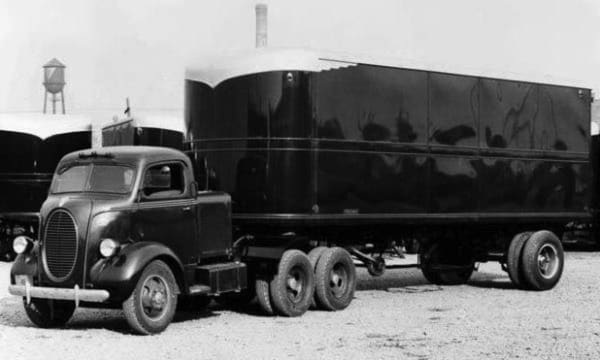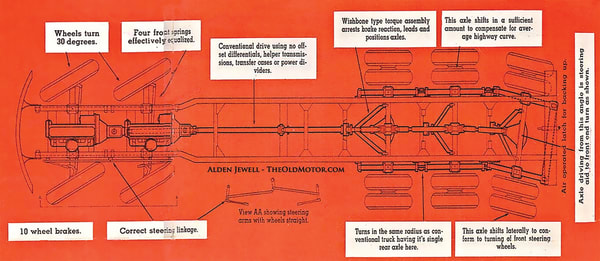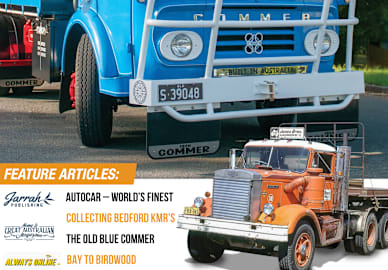Jim Gibson delves into the archives about some early US history regarding a solution to gain more power for heavy-duty trucks during the late 1930s and early 1940s.
In 1939 a Detroit, Michigan company, Grico, solved the power problem in trucks in an innovative way, by fitting a pair of V8 engines into a Ford cab-over prime mover.
Of course modern heavy-duty trucks are all diesel-powered, but earlier last century long distance prime movers were in the main petrol guzzlers. And apart from the high fuel consumption of a petrol-powered engine, they lacked horsepower to maintain good road speed across North America’s open plains and the amount of torque required to climb the Rocky Mountains without having to clamber up over the hills at a slow pace in rather a low gear.
GM’s brand-new GMC 6-71 diesel was introduced in 1938, and besides being expensive, it also hadn’t clocked up enough miles in order to prove its reliability and longevity, together with superior performance and considerably better fuel economy.
Ford’s side-valve V8s were inexpensive and quite ‘torque-y’ – in particular the 239 cu.in (3.9litres) Mercury truck engine with 95hp on tap.

Offering a petrol-powered solution was the Grico Two Axle Drive Company with its Ford Mercury twin-engine Ford truck. Grico was a subsidiary of the Gear Grinding Machine Company of Detroit.
Gear Grinding Machine’s leading technical mind was Alfred Rzeppa (pronounced Cheppa), the inventor of the Rzeppa constant-velocity universal joint (used in all modern front-wheel-drive cars today). The Rzeppa joint was just one of the Gear Grinding Machine Company’s many innovations involving the automotive industry.
The Grico subsidiary’s main product was tandem axle systems for heavy-duty trucks, and the Twin-Motor Truck might be considered a logical extension of that approach. The Ford COE prime mover’s original V8 engine, drivetrain, and rear axle were retained, and a second V8 engine, transmission, and driveline combination was installed behind the cab, under a sheet metal housing, driving the second axle in the tandem.
The two powertrains were configured so either one could be operated individually to drive the truck, or they could be run in tandem, controlled by a single throttle, clutch pedal, and shift lever. How many Twin-Motor Trucks were produced is not known. However, while it was quite possibly the first – Grico was not the only builder of dual-engine Ford trucks in that era. Manufacturers included Spangler, E&L, Merry-Neville, Thorco, and others. But the trend didn’t last, as modern high-output diesels were gathering momentum, with only one of these diesel engines required to offer sufficient power and economy.

According to Fred Crismon, author of U.S. Military Wheeled Vehicles, these highly specialized vehicles were used during WWII as a tractor designed to pull a 60-foot-long ‘super-trailer’ in which 34 complete tail cone assemblies could be carried. The tail cones were for the B-24 bomber of which Ford was one of several builders. The assemblies were carried between several manufacturing plants according to contemporary sources, including runs between California and Texas, Willow Run, Michigan, and Tulsa, Oklahoma, and Fort Worth, Texas, and between Loudonville, Ohio, and Buffalo, New York. Two Mercury V8 power-plant combinations were used.
Crismon also noted that the tractor was rated at 10-tons and the trailer was loaded from the top by overhead cranes. About 70 of these trucks were built, and the twin-engines were accessed by pulling them as a unit out of the front of the tractor. Crismon says, although Ford was often mentioned as the builder of these trucks, a second company, Thorco Dual Motors also built them – Thorco being a trademark for the Thornton Axle Company.

However, James Wagner, the author of Ford Trucks Since 1905, wrote that E&L Transport of Dearborn, Michigan built about 100 tractors and Mechanical Handling Systems built the corresponding trailers.
*Jim Gibson





